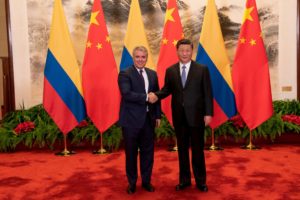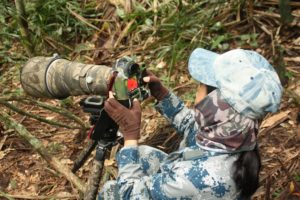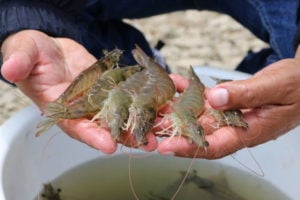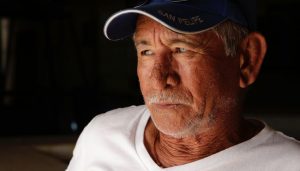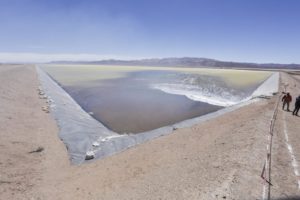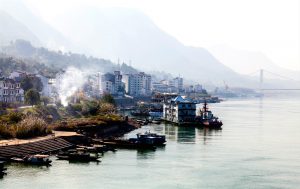With government backing and eyes on boosting trade with China, a group of Colombian businesspeople has been pushing plans to build the Tribugá port, a controversial commercial project on the country’s Pacific Ocean that could clash with the country’s nascent ecotourism industry.
The deep-water port is slated for the forest-lined Gulf of Tribugá, a symbol of Colombia’s immense natural wealth and epicentre of its tourism drive. The unique inlet is a principal stop in humpback whales’ annual migration and a major attraction.
Local Afro-Colombian communities hope to develop economies based on sustainable tourism by capitalising on the area’s biodiversity and improved security following the 2016 peace agreement with the former FARC guerrillas. They are at odds with the port.
Pacific port
The Tribugá Bay port idea is not new and arises intermittently in national conversations.
This time there are two main differences from the last significant mentions in 2005. Now, it has the backing of President Iván Duque but a community that in the last decade has built a sustainable and vibrant local economy around whale watching opposes it.
Duque highlighted the project in his presidential campaign last year. “I won’t rest until I see the Ánimas-Nuquí corridor connected to the Tribugá port,” he told an audience in Manizales, one of the main cities in the coffee-growing region driving the project, a week after winning the election.
“The future of Chocó’s competitiveness, the future of the connection of the Colombian coffee region and the Pacific, combined with port opportunities, will undoubtedly involve Tribugá,” he said in Quibdó last November, during one of his Saturday workshops with local communities.
Investors say the gulf is the perfect spot for a port. The sea reaches depths of 20 metres just 2km from the beach. They estimate there would be no limitations to the anchoring and berthing of ships with loads of up to 200,000 tonnes.
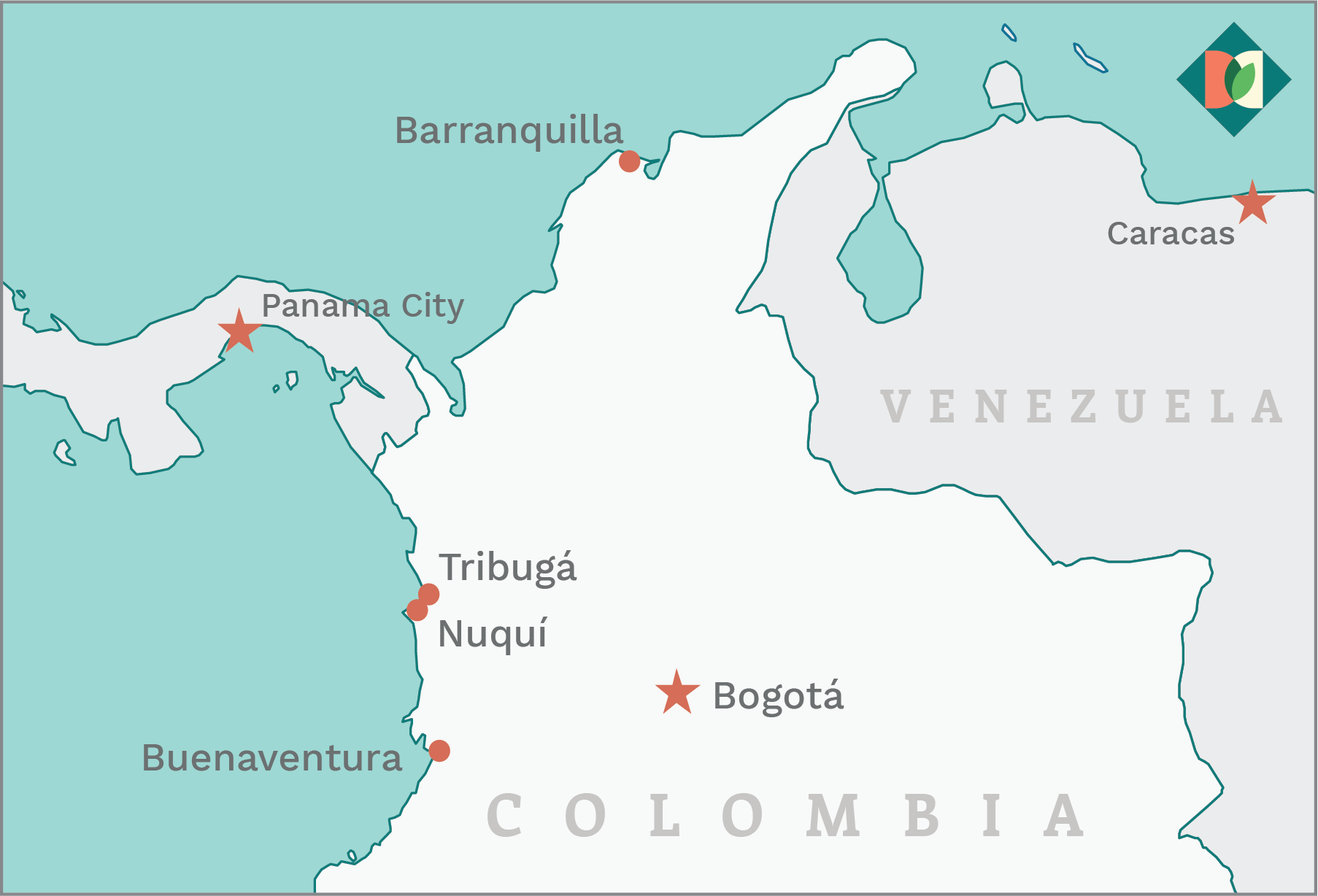
According to calculations by the Archimedes Society, the agency responsible for promoting the project, the Tribugá port could reduce freight transport costs by up to 90%. It could become the third largest port in the country after Buenaventura, further south on the Pacific coast, and Barranquilla on the Caribbean coast, it says.
Areas of greater environmental sensitivity than Tribugá coexist with ports
Its viability also depends on a proposed road between Quibdó and Nuquí, which would traverse the forest and the biodiverse Baudó mountain range.
The re-emergence of the port whipped up a storm ever since Duque’s government named it in the first draft of the National Development Plan, presented to Congress this year. He eventually backed down, but included a reference to a “deep-water port in the North Pacific” that could not refer to any other.

If it materialises, the port could bring greater economic opportunities to Chocó, the department with the highest levels of extreme poverty in Colombia. The environmental cost, however, could also be high. Chocó’s coastal region is one of 36 biodiversity ‘hotspots’ globally and is comparable to the Amazon rainforest.
Tribugá tourism
Between June and October, more than 800 whales come to reproduce on the dark-sand beaches of Nuquí municipality, where the Gulf of Tribugá is located, during their annual trek from Antarctica via Chilean Patagonia.
Thousands of tourists follow the whales, watching them jump among the waves with their calves. It is a remarkable turnaround for the mostly Afro-Colombian inhabitants of Nuquí, which until two decades ago was synonymous with poverty and armed groups like FARC and the National Liberation Army (ELN).
Locals communities attribute a nationwide tourism boom to the 2016 Peace Accord. Last year, 4.3 million tourists visited the country, more than double that of 2014.
In 2018, 9,100 tourists came to this remote Pacific destination, despite poor air connections and roads. For people of the local municipality, who number 8,958, this is considered significant.
9100
“That is economy on a very good scale,” says Josefina Klinger, who has been promoting community tourism together with her organisation, Mano Cambiada (Lending a Hand).
“Our vision of development is one based on the gifts of the land. It may not be so in Medellín or Manizales, but we – the ancestral peoples who have lived here for centuries – are defined by water and the forest, which have traditionally been associated with poverty,” she adds.
According to Harry Mosquera, of the General Community Council of Los Riscales, which brings together the nine Afro-Colombian communities directly affected by the port, the project could be disastrous:
“It is a detrimental project that seriously compromises our means of subsistence, such as fishing, the extraction of molluscs like the piangua (ark clams) and community tourism associated with whale watching.”
Since it’s close to their collective territories, local communities must be consulted on the project, which has both detractors and defenders locally. So far, discussions have been “more external than with us,” Mosquera says.
The quality of the habitat would decline considerably if their acoustic communication were blocked, affecting their behaviour and distribution
In 2014, the Afro community declared the entire coast of Nuquí, including the proposed port area, as the regional integrated management district (or DRMI) of the Gulf of Tribugá–Cabo Corrientes, which they now manage.
This status, designed for sensitive sites that already have some oversight, has allowed them to continue promoting local development that reconciles the environmental services provided by these ecosystems and their livelihoods.
“Not only is Nuquí’s beauty on display, but also the community processes of organising the territory and developing alternative economies that allow it to maintain its relationship with the land,” says Julián Idrobo, professor at the University of the Andes’ Interdisciplinary Centre for Development Studies (Cider).
Conservation efforts are not restricted to Nuquí. In the surrounding coastal corridor, there is now a whole mosaic of protected areas created by local communities, national and regional authorities, and some environmental NGOs. Many didn’t exist a decade ago, which has complicated the port’s construction.
Just north of Nuquí is the Utría National Park, 543 square km of mangroves, coastline and ocean also populated by whales. In 2013, an exclusive 207km artisanal fishing area (Zepa) was established. Wok and Takami, white fish found here, are sold to restaurants.
“Tribugá was the laboratory where, based on community planning, the country’s fishing standards were established,” says economist José Andrés Díaz, former director of the NGO MarViva. These were later implemented in Costa Rica and Panama and should be scaled up to different Colombian regions, he says.
South of Nuquí, another DRMI, called Encanto de los Manglares del Bajo Baudó (The Enchanted Lower Baudó Mangroves), was established two years ago. Now, the environment ministry aims to declare the entire Tribugá area a biosphere reserve under a UN classification that recognises territories in need of sustainable management.
Whale nursery
Humpback whales visit many parts of the Pacific Ocean but have a special predilection for the Gulf of Tribugá.
“It is a key habitat for mothers and their calves because it is well protected from adverse oceanographic conditions and predators such as killer whales and sharks,” says Natalia Botero Acosta, a marine biologist.
According to Botero, Tribugá’s deep waters, which are relatively close to its quiet shore, constitute a geographic exception within an exception and a haven for whales. Some, identified by their tails, spend periods of up to 15 days with their calves in this sala-cuna (nursery).
The main concern over the deep-water port is noise pollution driving whales away. For several months, researchers have recorded the marine soundscape, using hydrophones submerged at 15 metres. Early indications suggest it is one of the most pristine places in Colombia’s ocean.
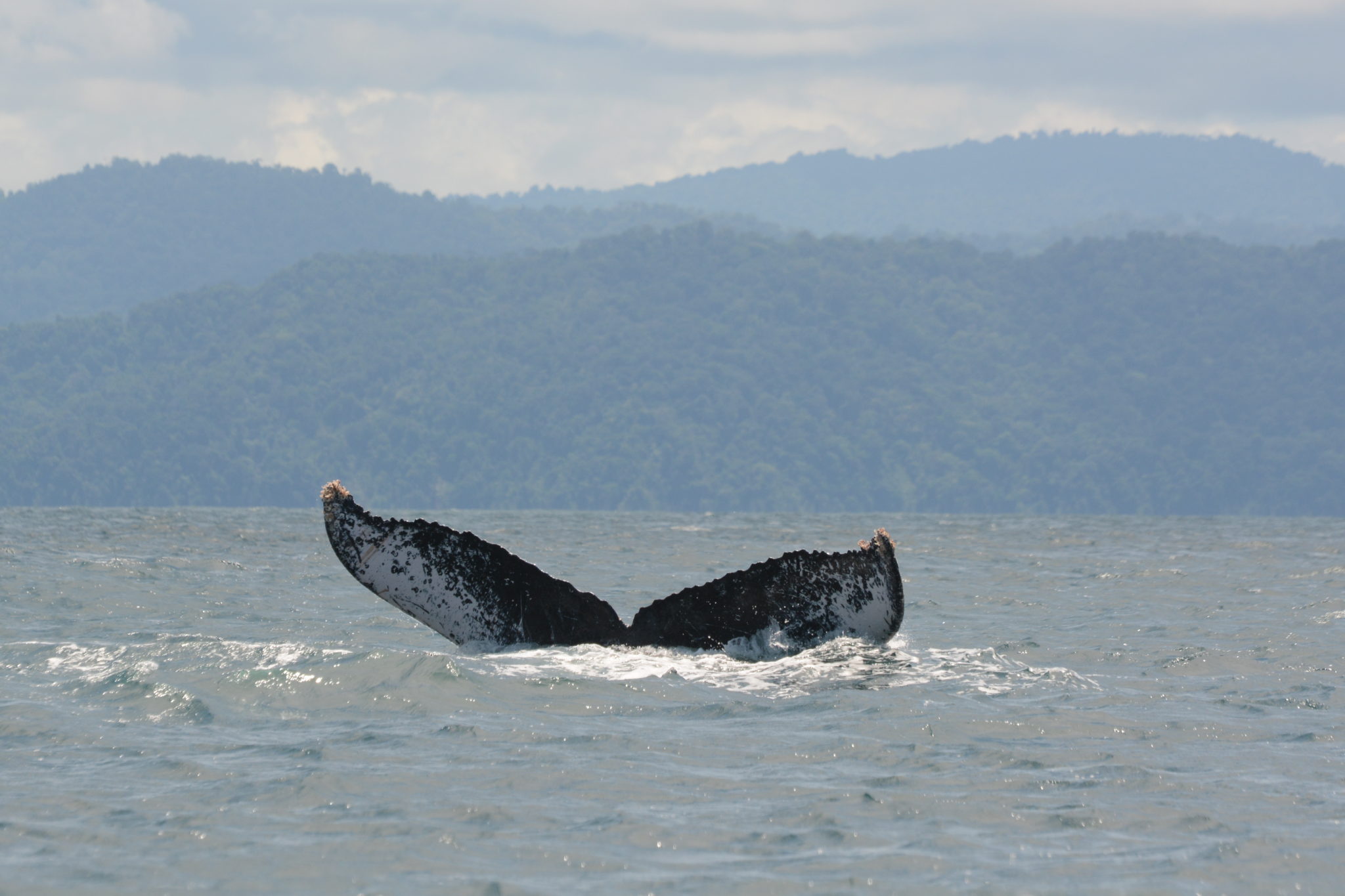
“The quality of the habitat would decline considerably if their acoustic communication were blocked, affecting their behaviour and distribution,” says Botero, who coordinates the sound project from the Macuáticos Foundation.
“We have already seen that the engine of a boat like the ones we see today produces sounds that can block out their song. What will happen with a merchant ship?” she asks, adding that collisions with boats and pollution are other major concerns.
Botero’s team will also begin taking tissue samples from whales and studying a hormone called cortisol, which will allow them to determine their stress levels. They will then compare these with those from Buenaventura port’s bay.
Chinese dream
Although Colombia straddles two oceans, it only has two cities on the Pacific coast. This has made it difficult to design an effective economic strategy for greater integration with Asia. Most countries in the region already have China as their main or second largest trading partner.
Though it hopes to boost trade with China through the port, the Archimedes Society has also noted the ecologically sensitivity of Nuquí.
“Areas of greater environmental sensitivity than Tribugá coexist with ports. The secret is to fashion environmental management plans that establish commitments and obligations,” says William Naranjo, Archimedes’ project lead.
Naranjo aims to borrow ideas from around. Port Douglas, near Australia’s Great Barrier Reef, forces ships to cut engines by connecting them to the power grid prior to docking. Vancouver limits vessel’s speed to 11 knots to avoid collisions with whales. Rotterdam applies special tariffs for ships with low emissions. Oslo uses zero-emission forklifts.
“That is how those two constitutional principles of economic growth and environmental sustainability will be reconciled,” Naranjo says.
Its managers say the port’s economic benefit lies in affording access to the sea for three departments where half the industrial infrastructure is underutilised.
“Since half of the cost is transport freight, it is impossible to be competitive. The port alone will ipso facto boost the other 50% that is not used today,” Naranjo promises. Half the project’s partners are public entities from the region, including provincial authorities in Caldas, Risaralda and Chocó, the metropolitan area of Pereira and two public universities.
Yet Colombia’s national trade strategy for Asia is unclear. President Duque recently visited Beijing and Shanghai, hoping to diversify exports, of which oil accounts for 77.8% and overall commodities 94%.
Asked which sectors would benefit from the port, Naranjo said: “I don’t know off the top of my head,” before promising to find out. Unhelpfully, the telephone number listed on Archimedes’ website connects to a bakery called ‘Ricuras de la 51’ (Delights of the 51).
This lack of clarity has led many to question the justification for a port in Chocó. “It is not necessary to build another one when, according to 2018 data, in Colombia we are operating at half our port capacity,” says congresswoman Catalina Ortiz, who prefers the option of dredging Buenaventura to improve its access channel.
For Klinger, Nuquí’s model of tourism is working, although it could use an injection of cash: “The only thing needed is economic capital, because the social and territorial capital are already there.”



